Publications
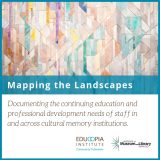
Mapping the Landscapes Storyboard Data Visualization Users Guide (TrueBearing)
Data visualization dashboards extend the potential insight for users far beyond that of static graphics. This brief guide identifies the basic toolset with which a user can "drill down," asking questions and discovering important underlying patterns in the data. Acknowledgements This project was made possible in part by the Institute ...

Mapping the Landscapes Interactive Survey Data Storyboards (TrueBearing)
Downloadable, interactive results from the Mapping the Landscape survey, filterable by respondent location and sector. Requires the free Tableau Reader program to use offline. Results can also be viewed and interacted with online here. Acknowledgements This project was made possible in part by the Institute of Museum and Library Services ...
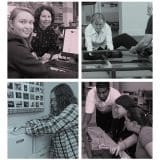
National Agenda for Continuing Education and Professional Development Across Libraries, Archives, and Museums
This National Agenda for Continuing Education and Professional Development across Libraries, Archives, and Museums provides a broad planning and evaluation framework for the systemic strengthening of continuing education and professional development (CE/PD) across the landscape of funders, professional associations, program administrators, and trainers involved. This document synthesizes three years of ...

Mapping the Landscapes: Continuing Education/Professional Development Needs Assessment Survey
The Mapping the Landscape needs assessment in continuing education and professional development offers a broad and statistically reliable overview of current perceptions, needs, assets and barriers, levels of competency and confidence across and within archives, library, and museum professions in the United States. Based on a comprehensive conceptual model, the ...

Report from the Repositories & Preservation Workgroup
Repositories are a vital tool in modern information management and a key component of preservation and long-term availability. They are not well-suited, however, to the current challenges posed by our information-rich society and the multitude of stakeholders involved in the modern scholarly publishing system. Strengthening repositories and standardizing preservation processes ...
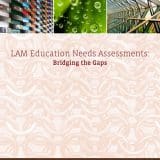
LAM Education Needs Assessments: Bridging the Gaps
This publication aims to introduce guiding principles and practices for CE/PD needs assessments from beyond the library, archives, and museum (LAM) sphere of reference. A literature review section highlights needs assessment research from other fields (e.g., higher education, nonprofit training, etc.), drawing attention to models that could inform LAM practice ...
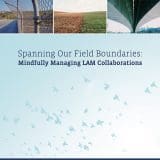
Spanning Our Field Boundaries: Mindfully Managing LAM Collaborations
Museums, archives, and libraries serve as knowledge conduits for their constituent communities. A core focus for each of these three fields is organizing and adeptly connecting users with content, often in service to the public good. This mission alignment positions organizations in these fields to collaborate. Federal funding agencies, such ...

Library Publishing Directory, 2016
The Library Publishing Directory provides an annual snapshot of the publishing activities of academic and research libraries, including information about the number and types of publications they produce, the services they offer authors, how they are staffed and funded, and their future plans. In documenting the breadth and depth of activities in this field, ...
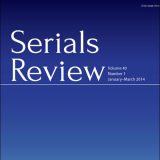
Taking Action in a Critical Moment: From Innovation to Impact
In an era characterized by rapid technological change, academic publishers and the many stakeholders who support them have adapted and morphed, shifting our procedures and priorities to meet the challenges of dissemination and stewardship in an increasingly digital world. This article discusses today's critical moment in academic publishing and its ...
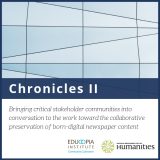
Scanning the Environment: North Carolina Born Digital News Preservation Practices 2015
What little is known about news preservation practices in the United States is alarming. In 2012, the Pew Research Center’s Project for the Excellence in Journalism cited that already “the emerging world of community online news, less than a decade old, can be difficult to access.” A 2012 survey of ...
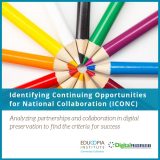
ICONC Project Dataset
Within this .zip file are four files pertaining to the ICONC project dataset. An .xls excel workbook holds 13 pivot table report views on individual worksheets, as well the ICONC project's raw data worksheet. Data report views include: Timeline, Project Lifespans, All State Activity Profiles, State Profile Detail, Activity_Histogram by ...
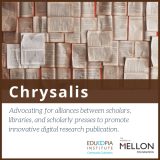
Chrysalis: Moving Forward Collectively
After summarizing critical systemic issues within scholarly communications, this white paper explores the translation and applicability of the established Collective Impact model to foster change towards digital scholarship sustainability. A rationale and process for using the Collective Impact model within scholarly communications is followed by observations from an initial pilot ...

Vertically Integrated Research Alliances: A Chrysalis for Digital Research
This white paper summarizes the findings from a one-year planning project that explored the Vertically Integrated Research Alliance (VIRA) model viability within three specific humanities domains. The VIRA model is defined, and the results from stakeholder focus groups are noted ...

U.S. Digital Preservation Collaborations from 1994-2014 State-by-State Overviews
In 2012, the Educopia Institute was approached by the Library of Congress’ National Digital Information Infrastructure and Preservation Program (NDIIPP) to identify and document collaborative digital preservation activities in the U.S., across relevant memory sectors (e.g., academic, government, archival, museum, nonprofit, and commercial). Using these “state profiles”, Educopia was also ...
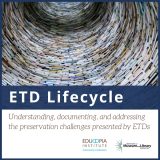
ETD Lifecycle Management Tools
The project team developed and documented software tools to be used as micro-services to assist in ETD lifecycle management. Micro-services are single-function services that can be used individually or incorporated into existing repository workflows. The tools were openly licensed for use and modification through the University of North Texas Libraries ...
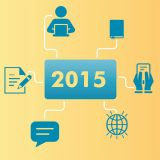
Library Publishing Directory, 2015
The Library Publishing Directory provides an annual snapshot of the publishing activities of academic and research libraries, including information about the number and types of publications they produce, the services they offer authors, how they are staffed and funded, and their future plans. In documenting the breadth and depth of activities in this field, ...

Library Leadership Roadmap
Built on the work of the Recommendations for Action, the 21st Century Library Leadership Logic Model and Library Leadership Roadmap establish the benefits of coordinated action to enrich library leadership training. The Logic Model describes the current state of leadership in libraries and the need for stronger leaders. The Roadmap charts ...

ETD Lifecycle Management Tools Manual
The Manual provides resources and instruction for tools in five major areas of lifecycle curation for ETDs, including: Virus Checking: Submitted ETD's may contain viruses that could damage the entire collection if not screened in advance. We provide instructions for using ClamAV. File Format Identification: Knowledge of the formats used in an ...

ETD Lifecycle Management Workshop
The Lifecycle Management of Electronic Theses & Dissertations (ETDs) Workshop consists of a modular set of Creative Commons (CC-BY 4.0) licensed materials that are available for ETD programs or professional associations to make use of (and adapt) for educating a wide-range of ETD stakeholders. They can be modified, expanded upon, ...

Nexus Recommendations for Action
In June 2014, the Nexus project assembled stakeholders in library leadership programs, including library leaders, leadership program consultants, and professional organizations to discuss the necessary steps to catalyze library leadership development. The resulting Recommendations for Actions set forth an ambitious agenda to build a shared leadership development roadmap, shared curriculum ...

Leadership Development Impact Assessment
Based on focus groups conducted by the Center for Creative Leadership, the Leadership Development Impact Assessment establishes the core challenges faced by leaders in academic, archival, public, and special library sectors. The Impact Assessment also outlines the leadership competencies that are needed to respond to these challenges ...
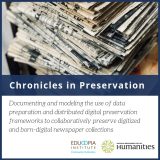
Chronicles Interoperability Tools
The Chronicles project focused on developing strategies, workflows, and tools for ingesting preservation-ready news content. Early in the project, the PI, PM, and Technical Advisor hosted a set of concentrated discussions across the three DDP partners (MetaArchive, UNT Coda, and Chronopolis). In these conversations, we formalized a strategy for accomplishing ...
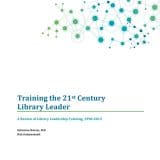
Training the 21st Century Library Leader
Training the 21st Century Library Leader provides an analysis of library leadership training in the U.S. context. It documents the models and features, geographic locations, sectors and audiences, funding and costs, founders and hosts, and evaluation methodologies deployed by more than seventy library leadership training programs during the last 15 ...

Comparative Analysis of Distributed Digital Preservation Frameworks
The Chronicles in Preservation project has provided an evaluation of three leading technical approaches in the U.S. context (iRODS at Chronopolis, LOCKSS at MetaArchive, and Coda at University of North Texas Libraries) for institutions that want to preserve their diverse newspaper holdings in Distributed Digital Preservation (DDP) frameworks. Each of ...

Library Leadership Training Program Dataset
Providing the foundation for the Training the 21st Century Library Leader white paper, this dataset documents a spectrum of leadership development offerings that served academic, public, special, and archival libraries between 1998 and 2013. The data codebook and two .tsv data files are made available within this .zip download ...
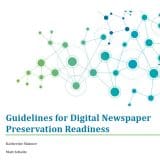
Guidelines for Digital Newspaper Preservation Readiness
Libraries and other cultural memory organizations curate a substantial body of digital newspaper content. The genesis of these collections is often a series of iterative and cumulative digitization and born-digital acquisitions with idiosyncratic and ad-hoc data storage structures that vary radically in their file types, structures, and metadata. These institutions ...
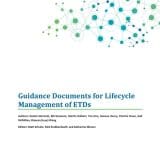
Guidance Documents for Lifecycle Management of ETDs
Colleges and universities are steadily transitioning from traditional paper and microfilm to digital formats for the submission and dissemination of graduate theses and dissertations. While this move from print-based to electronic theses and dissertations (ETDs) greatly enhances the accessibility and sharing of graduate student research, it also presents significant challenges ...

Pilot ICONC Dashboards
The ICONC project created an open data-set revealing the characteristics of U.S.-based digital preservation collaborations from 1994‐2014. Data was populated from publications, websites, grant awards, and surveys of NASCIO and NAGARA members. Ten data attributes were captured for each of the 211 documented collaborative activities; six areas of data attributes ...

Library Publishing Directory, 2014
The Library Publishing Directory provides an annual snapshot of the publishing activities of academic and research libraries, including information about the number and types of publications they produce, the services they offer authors, how they are staffed and funded, and their future plans. In documenting the breadth and depth of activities in this field, ...
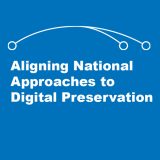
Aligning National Approaches to Digital Preservation Proceedings
On May 23-25, more than 125 delegates from more than 20 countries gathered in Tallinn, Estonia, for the "Aligning National Approaches to Digital Preservation" conference. At the National Library of Estonia, this group explored how to create and sustain international collaborations to support the preservation of our digital cultural memory ...
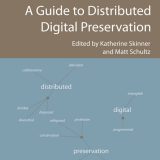
A Guide to Distributed Digital Preservation
Authored by members of the MetaArchive Cooperative, A Guide to Distributed Digital Preservation is the first of a series of volumes describing successful collaborative strategies and articulating specific new models that may help cultural memory organizations work together for their mutual benefit. This volume is devoted to the broad topic ...
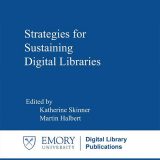
Strategies for Sustaining Digital Libraries
This collection of essays on sustaining digital libraries is a report of early findings from pioneers who have worked to establish digital libraries, not merely as experimental projects, but as ongoing services and collections that are intended to be sustained over time in ways consistent with the long-held practices of ...
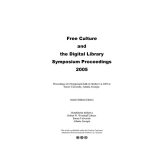
Free Culture and the Digital Library, Symposium Proceedings
These proceedings are an unusual blend of contributions inspired by a group of shared beliefs about freedom of information and digital libraries. The core convictions that inspired this symposium and this book are 1) that the public has a right to freely access, preserve, and use shared cultural information; 2) ...